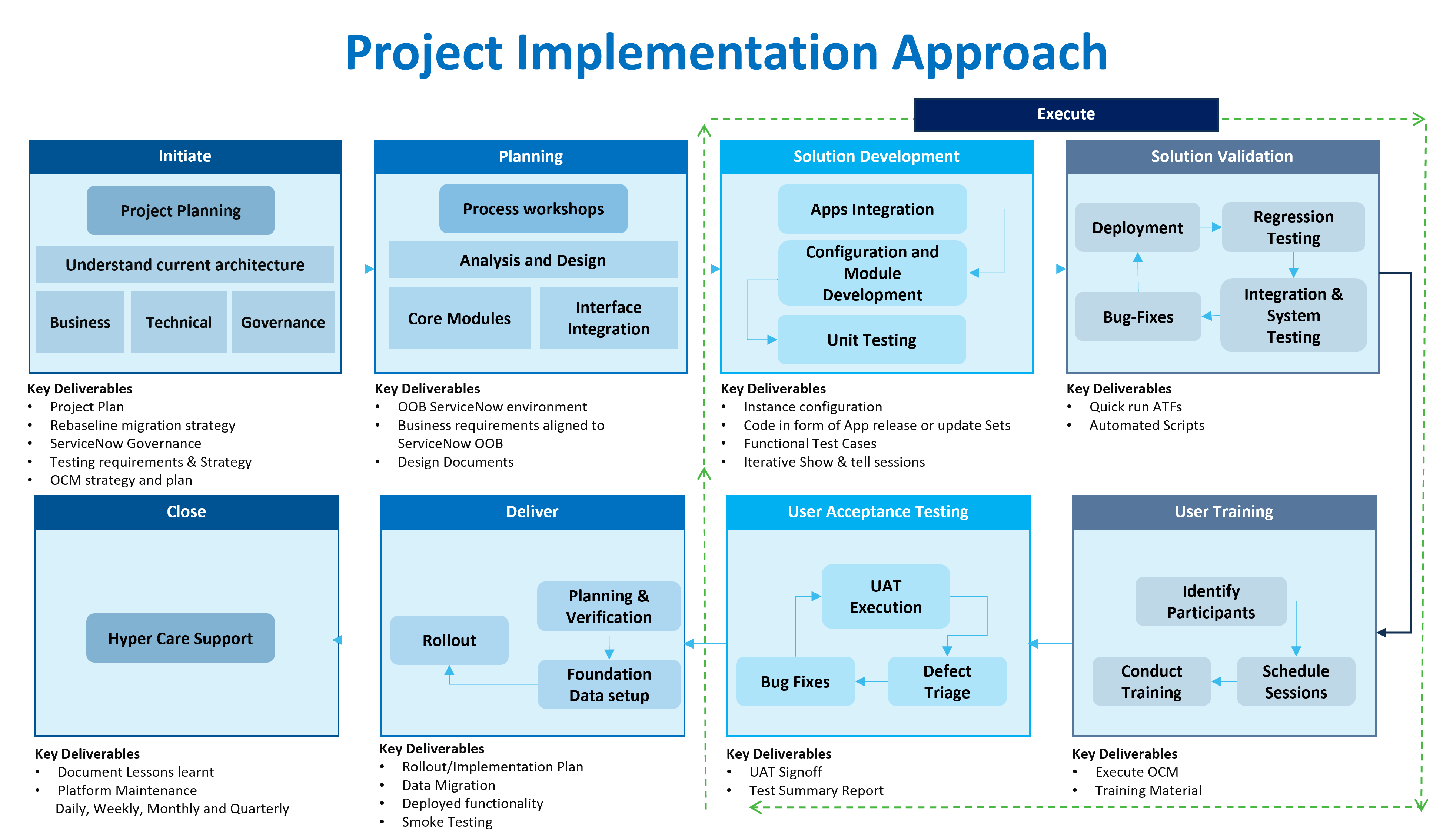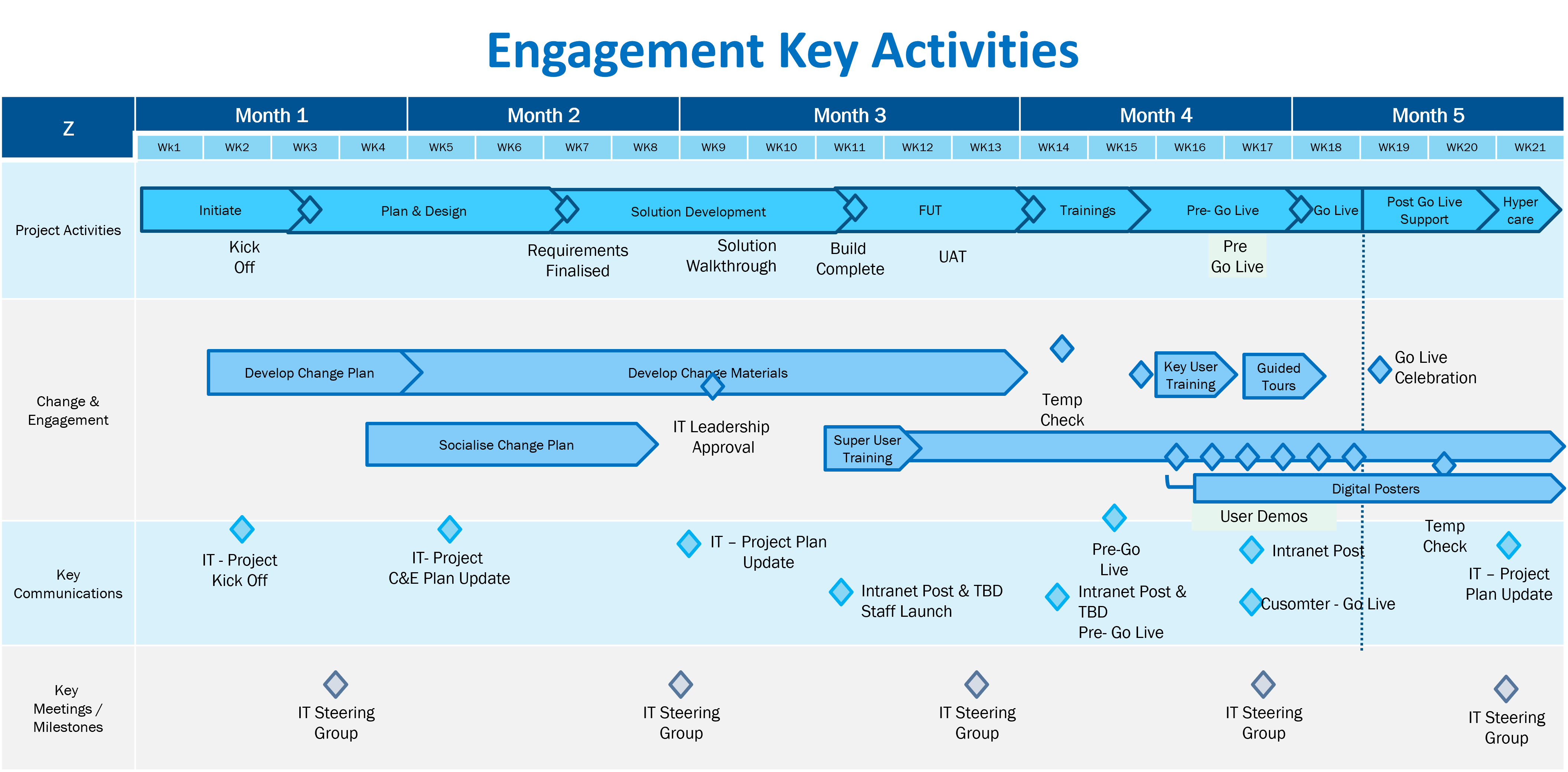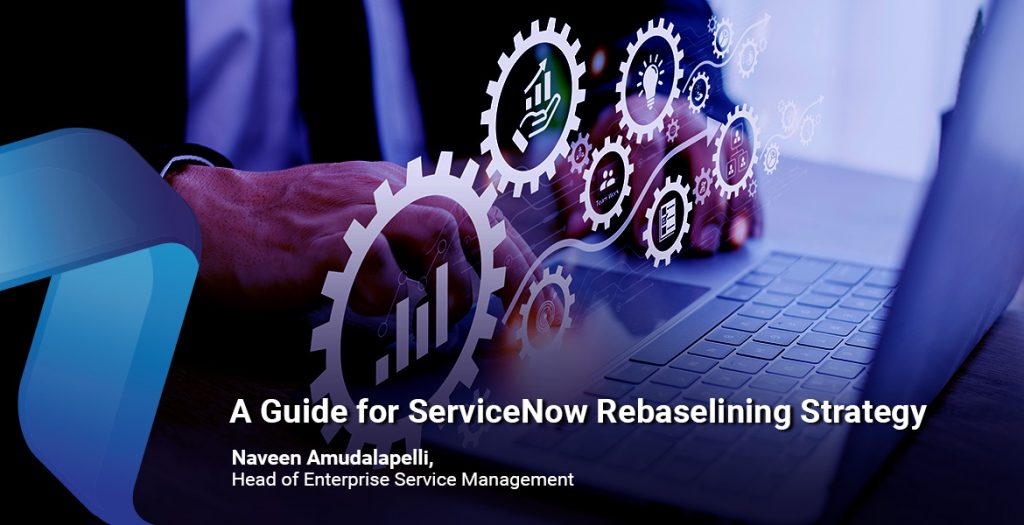
Step 1: Initiate
Perform a Comprehensive Assessment: Prior to implementing changes, it’s crucial to perform a comprehensive assessment of your ServiceNow instance. This includes understanding its architecture, documenting current processes, and critically evaluating the necessity of each existing customization. This approach ensures that any modifications are well-informed and aligned with the system’s overall functionality and goals, and is foundational to making informed decisions throughout the re-baselining process.
Create a Lower Environment: To mitigate risks associated with major changes, establish a parallel or lower environment for migration. This environment serves as a sandbox for testing, guaranteeing a safe space to validate configurations before deploying them to the live instance.
Identify Data Migration Strategy: Develop a robust strategy for data migration and field mapping. This involves understanding the difficulties of your data model, ensuring a smooth transition of essential data from the existing instance to the reconfigured one. A well thought-out data migration strategy is crucial for maintaining data integrity.
Testing Requirements Strategy: Testing is a critical phase in the ServiceNow instance re-baselining process, ensuring the success of the migration and configuration changes. Key testing requirements include comprehensive end-to-end validation, verification of data migration, compatibility testing, user acceptance testing (UAT), and performance testing. The testing strategy involves a phased approach, leveraging automation for efficiency, parallel testing in lower environments to minimize disruptions, prioritizing user-centric testing, and implementing continuous monitoring for proactive issue identification. A robust testing framework is essential to guarantee a seamless transition and optimal performance in the re-baselined ServiceNow instance.

Step 2: Planning
Migrate to Out-of-the-Box (OOB): Initiate the migration process by upgrading your ServiceNow instance to the latest version. This ensures access to the latest features and improvements provided by ServiceNow.
Skipped Records Review: During the upgrade, carefully review skipped records and revert customizations to Out-of-the-Box. Additionally, it is recommended to reinstall any necessary module plugins again and revert the skipped records to OOB. This careful approach helps ensure that all necessary features are reverted to the OOB settings, maintaining the integrity and functionality of the ServiceNow instance.
Gradual Migration of Customizations: Gradually migrate customizations to the Out-of-the-Box instance while carefully ensuring compatibility. Conduct end-to-end validation and extensive testing to guarantee that all functionalities are retained, providing a seamless user experience.
Lead Process Workshops: Facilitate process workshops to gather requirements. Engage stakeholders to document business requirements aligned with Out-of-the-Box configuration. This collaborative approach ensures that the re-baselined instance aligns with business objectives.
To-be Process Workflows and Security Configurations: Based on the Out-of-the-Box, develop new process workflows and security configurations. Ensure that these configurations adhere to the best practices and support efficient business processes.
Agile Stories Backlog and Sprint Planning: Create a backlog of stories, prioritizing tasks, and planning sprints for configurations. This iterative methodology allows for flexibility and adaptability during the development process.
Test Case Preparation and Acceptance Criteria: Create comprehensive test cases and clear acceptance criteria to ensure new configurations align with business needs. Comprehensive testing is crucial for identifying and resolving potential issues prior to deployment.
Step 3: Execute
Align with To-be Processes: Configure the ServiceNow instance with the newly-developed processes aligned with the Out-of-the-Box model. Ensure that configurations are well-documented and align with the requirements gathered during process workshops.
Show and Tell Demos: Conduct show-and-tell demos to gather feedback from stakeholders. These demos serve as a crucial feedback loop, allowing for adjustments and refinements based on real-time input.
Test Environment Upgrade: Repeat the entire process in the test environment, including reverting customizations to Out-of-the-Box, installing configurations, and performing data migration. This step is a critical checkpoint before moving to the production environment.
Validation and Training: Validate configurations and migrated data in the test environment and ensure that end-users are prepared for the changes.
Organizational Change Management (OCM): Incorporate OCM activities into the implementation process. Execute well-planned OCM strategies to ensure successful adoption and adaptation to new changes within the organization.

Step 4: Deliver
Full Back up of Production Environment: Before the final migration, perform a full backup of the production environment. This step is a precautionary measure to safeguard against any unforeseen issues during the migration process.
Production Instance Upgrade: Execute the production instance upgrade, repeating the process of reverting customizations to Out-of-the-Box, installing configurations, and performing data migration. This step requires meticulous attention to detail to avoid any disruptions to ongoing operations.
Step 5: Close
Instance Health Check and Baseline Performance: Conduct a comprehensive instance health check post-migration. Document baseline performance metrics to establish a benchmark for ongoing monitoring and optimization.
Document Lessons Learned
As you reach the culmination of your ServiceNow instance re-baselining project, take the time to document lessons learned. Reflect on the challenges faced, successful strategies employed, and any unexpected discoveries. These insights serve as invaluable knowledge for future projects and continuous improvement.
Platform Maintenance
To ensure the sustained success of your re-baselined ServiceNow instance, establish a comprehensive maintenance routine:
Daily Maintenance: Implement daily checks for the following:
- Review the System Diagnostics homepage
- Review the previous day’s slow transaction
Weekly Maintenance: Conduct weekly reviews to identify and address emerging trends, ensuring long-term stability.
- Review your scheduled jobs
- Check for repeated errors in the error log
- Look for excessive logging. Find log files over 1 GB
- Find slow-running running jobs
- Find long-running jobs
- Trend your top 20 transactions
Monthly Maintenance: Perform monthly assessments to verify configurations, address any evolving needs, and optimize system resources.
- Track your table growth rates
- Clean your tables
- Review the slow queries log
Quarterly Maintenance: Conduct quarterly reviews to align the instance with organizational goals, incorporating any new features or enhancements released by ServiceNow.
- Check for coding that could impact your ability to upgrade
Keep Instance Continually Improving:
- Find and fix issues with your end-to-end response time
- Consider your use case

“As part of our ongoing commitment to excellence, we’re excited to present ‘A Guide for ServiceNow Rebaselining Strategy.’ This comprehensive guide reflects our dedication to helping organizations harness the full potential of ServiceNow by optimizing and redefining their strategies. Dive into it and embark on a journey towards enhanced efficiency and innovation.”
Naveen AMUDALAPELLI
Head of Enterprise Service Management
Conclusion:
ServiceNow instance re-baselining is a strategic initiative that demands careful planning and execution. By following these detailed steps and incorporating best practices, organizations can enhance their ServiceNow instance, aligning it with the latest industry standards. A well-re-baselined ServiceNow instance not only supports current business needs but also sets the stage for leveraging the additional functionalities released by ServiceNow every six months.






